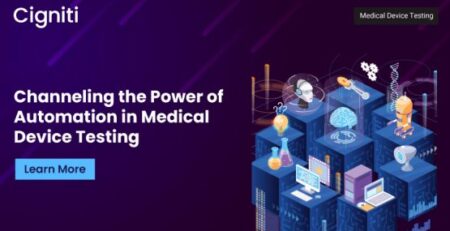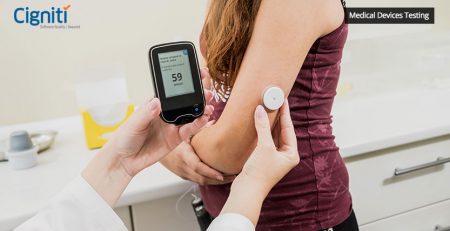Creating a Custom Safety Testing Plan to Suit the Needs of Your Medical Device
Digital disruption has impacted the healthcare industry enormously and kick started various innovations in the area of medical devices. This helped people to connect effectively with the latest medical devices embedding software that delivers better healthcare services. Medical devices are critical for patient care as they directly impact human lives by providing vital data and opinions derived from them.
Software glitches trigger several risks to medical devices and patients’ wellbeing. Insufficient software testing may cause the breach of patients’ confidential health information, thereby failing to comply with various health regulations.
Why Does Medical Device Testing Matter?
Medical devices are governed by multiple regulatory bodies and compliance. Moreover, effective performance is expected from them with accurate readings and they should be safe while in use. This compels medical device manufacturers to have a proper custom safety testing plan in place.
Medical Device testing is all about ensuring the product’s software and devices are fully compatible and compliant with several regulations and functionality. QA plays a critical role here, as this testing ensures that these devices fulfill all quality-related facets successfully.
A study by Meticulous Research on the medical device testing market states that it’s expected to reach $12.5 billion by 2027, at a CAGR of 4.7% during the forecast period of 2020 to 2027.
Significance of QA in Medical Devices Testing
- Assures compliance testing with several regulations such as HIPAA, PCI DSS, and FDA, etc.
- Ensures that patient mobile apps, healthcare CRMs, medical devices software, and Patient Database management systems work flawlessly under different scenarios
- Integration testing – ensures proper connectivity with other devices
- Accelerates clinical effectiveness of the medical devices
- End-to-end testing plans decreases the risk of device failure
Medical device QA is indispensable to ensure proper functioning and performance of medical devices. Malfunctions in medical device software may lead to false diagnosis, which may trigger life-threatening situations.
QA and its Role in Defining Custom Testing Plans for Medical Device Software Testing
An efficient custom safety testing plan in place, based on several sets of test requirements, accelerates a successful medical device testing strategy. These test requirements are based on several component specifications, manufacturing processes, and other critical functional specifications of the devices and software.
Further, assessment of these sets of requirements eases the test implementation as tests can be carried out efficiently on the software of medical devices.
Testing device functionality calls for testing different parameters. There are various methods for medical device software testing.
Functionality Testing
The emphasis of this test is to evaluate how the device is supposed to perform under various scenarios. It involves the authentic process of verification and validation of devices. Each of the functions is tested thoroughly with a combination of parameter values to know the device’s functionality.
Device Verification Testing
This testing confirms whether the inspection of any objective evidence with specified requirements of the device has been meted out or not. The procedure starts with clear and well-defined product requirements, which must be measurable in order to be verified.
Certain protocols are being followed by the process, which uses a standard methodology that compares current product requirements with already approved requirements. For instance, if the process of the device verification fails, then it is critical to undergo further investigation to detect the requirement that couldn’t meet the required expectation. Later, a further investigation will help to sort out whether the requirement can be updated or not.
Device Validation (Software/Hardware) Testing
When the entire system is ready, then validations for both software and hardware should be conducted for medical devices. The basic objective of this validation process is to test whether the device meets specific user needs or not. This can be done under simulated or real-world conditions to determine how the software and hardware work.
The basic approach that is in vogue is unit testing, which is done by considering a set of stages or blocks in the process. Furthermore, the entire system is validated as a whole. However, given the system complexity, it can be a daunting practice for the automated test system. In such scenarios, the best way is to go for a divide and validate approach.
Device Compatibility and Error Handling Testing:
The compatibility test is conducted on medical devices to ensure their compatibility across various other devices, which is critical for their success. This is vital to test how the device responds under several error conditions, especially under power fluctuations, internal failures, or any peripheral device failure. The devices should be adept at delivering required error messages to notify users.
Automated-Testing
This testing form is undertaken to ease the testing process and overcome manual tasks to ensure quality at speed. Automated testing accelerates the QA process with more accurate results. Basically, the procedure includes stimulating the target device, monitoring its response, recording the results, controlling the entire process with automation, and declaring the results.
If the testing teams opt for the test automation system, they need to adopt the strategies based on the test options achieved in each medical device development stage. However, if the testing strategy is for complex devices (which use extreme voltage and current), then it is crucial to break down the test specifications into hardware and software. This will ease the testing teams from facing any sort of challenges in the test automation environment.
White-Box Testing
Automation of white-box testing is important as it ensures the entire testing process is closer to the design and coding phases of the project. It has become indispensable to introduce an automated test system that enables an inside look at medical device software. Tests are designed and developed to monitor various parts for any overflow conditions, timing interactions, interrupt handling, error counts, etc.
Medical Device Testing: Challenges
Device Compatibility
One of the important challenges faced by medical device testing is the web and mobile compatibility of healthcare apps. Given the use of mobile platforms to perform any activity, it has become indispensable to optimize healthcare apps for several mobile devices and different operating systems. On the flip side, it is also important that the apps be easily accessible, ensure security for the sensitive information provided by the user, and at the same time, be adept at receiving every required update.
Security Breaches
A patient’s sensitive data breach could cost the medical device company a fortune. Security is one of the important requirements for every medical device app. Coupled to this, an application failure can severely impact the entire business value chain. Even a minor glitch can have an adverse effect if it impacts the user or customer experience. A best validation approach is needed to evade financial losses arising from breaches in security, data standards, and domain-specific regulatory compliance.
To refrain from such disasters, it’s advisable for medical device enterprises to leverage security testing by next-gen testing services providers. They are bestowed with the right skillset and high-end security testing tools to enable effective security testing and penetration testing of these medical device apps. Adopting security tests in every phase of the app’s developmental stage will efficiently help healthcare devices meet the required security requirements.
Cloud Adoption
Additional security measures are needed when the information is migrated to the cloud. The user’s security and privacy controls are held by the cloud service provider, where there is a possibility of exposing critical information to attack. Another challenge is the poor quality of cloud services. To overcome these challenges, it’s high time enterprises adopt the practices of cloud application testing and security testing during data migration to ensure security and safety for cloud data.
Closing Thoughts
Medical devices are critical as they are often used in life-threatening situations and have a direct impact on a patient’s healthcare, which means early medical testing is essential to ensure safety and reliability. A minute performance issue prevailing in these devices can prove to be fatal to the patient’s healthcare.
Thus, to ensure fully-functional medical device software, enterprises should adopt effective and efficient software quality assurance practices. Either they can devise an in-house custom safety testing plan or reach out to the independent testing service providers who are at the cusp of medical device testing expertise.
Cigniti’s dedicated Medical Devices Testing CoE experts help Verify & Validate Software for surgical instruments, contact lenses & ultrasound scanners, orthopedic implants & hemodialysis machines, cardiac pacemakers.
Our experts are fully capable of helping Clients test their smart, AI-based medical & healthcare devices such as Intelligent Beds, sterilization equipment, tool kits for Pets, etc.
Need help? Consult our team of dedicated Medical Devices Testing professionals to learn more about creating a custom safety testing plan to suit the needs of your medical device.





Leave a Reply